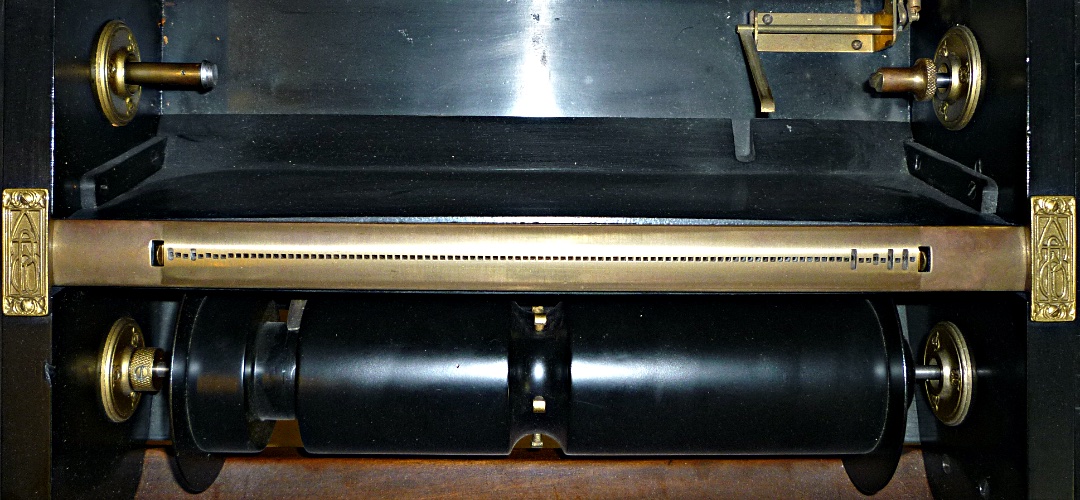1913 gab es den Vorläufer (Stoddard-Ampico), ab 1920 dann das ausgereifte Ampico A und ab 1929 die Weiterentwicklung -das Ampico B. Als die letzte Entwicklungsstufe aller Reproduktionsinstrumente kann das Ampico B angesehen werden. In dem Buch “Re-Enacting the Artist” schreibt Larry Givens über das Ampico B System: “With its fewer moving parts, its electric roll drive mechanism, its quieter pump and exhaust, its rapid-acting valves, and many other improvements and innovations the Model B Ampico cannot be considered anything less than the zenith of player piano development.“
Die Skala des Ampico B Systems hat 100 Löcher im Notengleitblock zzgl der zwei Hebel für die Spurkontrolle. Im Ampico Inspectors Book 1929 ist die Belegung der 100 Löcher so angegeben.
Die Ampico B Skala hat folgende Belegung (von links nach rechts):
Loch 0: Amplifier
Loch 1: blank
Loch 2: Intensity
Loch 3: Loud Pedal
Loch 4: Intensity
Loch 5: Shut-off
Loch 6: Intensity
Loch 7: Cancel
Loch 8 bis 91: 83 Töne von B2 bis a4
Loch 92: Re-Roll
Loch 93: Cancel
Loch 94: Intensity
Loch 95: Fast Crescendo
Loch 96: Intensity
Loch 97: Soft Pedal
Loch 98: Intensity
Loch 99: Slow Crescendo
Loch 100: Sub Intensity
Auch wenn Ampico A in 1929 durch das noch verbesserte Ampico B abgelöst wurde, wurden v.a. Ampico A verkauft – und sind bis heute sehr gefragt. Sicher eines der schönsten Reproduktionssysteme!


